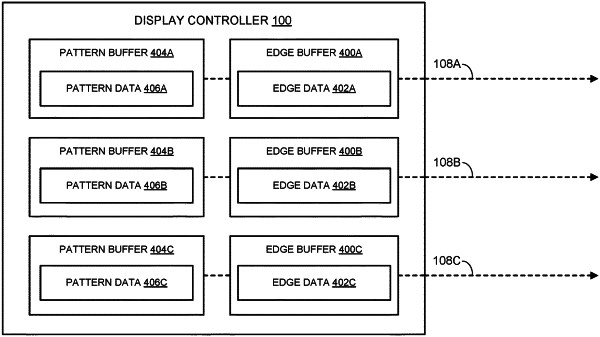| CPC H03M 1/0602 (2013.01) [G09G 3/22 (2013.01); H03M 1/66 (2013.01); G09G 2310/0243 (2013.01)] | 20 Claims |

|
1. A method for mitigating interference across analog signal lines, the method comprising:
receiving a digital data stream including a plurality of discrete signal patterns configured to drive a plurality of different analog signal lines, each signal pattern comprising two or more signal pulses bounded by corresponding pulse edges;
for each of the plurality of different analog signal lines, populating an edge buffer corresponding to the analog signal line with edge data representing pulse edges of one or more upcoming signal patterns set to drive the analog signal line;
for a target signal line of the plurality of different analog signal lines, populating a target buffer with target data representing a target signal pattern set to drive the target signal line;
searching one or more edge buffers corresponding to one or more potentially interfering analog signal lines, different from the target signal line, to identify potentially interfering pulse edges set to drive the one or more potentially interfering analog signal lines concurrently with the target signal pattern driving the target signal line;
selecting a set of one or more of the potentially interfering pulse edges for interference mitigation; and
prior to driving of the target signal line with the target signal pattern, modifying the target signal pattern to perform preemptive interference mitigation based at least in part on the selected set of one or more potentially interfering pulse edges.
|